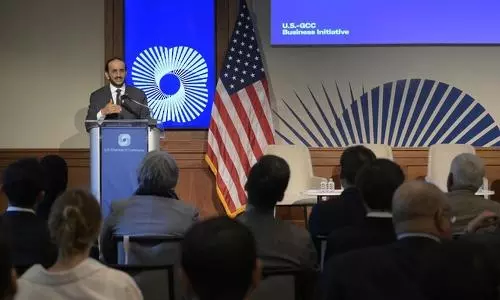
Nipah again?
text_fieldsAfter a gap of a year, Kerala has reported the incidence of of Nipah virus again. The 20-year old student from Thodupuzha, hailing from Vadakkekkara in North Paravoor, Ernakulam is the one suspected to be afflicted. He was admitted to hospital in the last week of May while staying in Thrissur. When his fever worsened, he was shifted to a private hospital in Kochi.
Through the tests that followed, the doctors suspected him to have contracted Nipah and the blood sample was sent to National Institute of in Pune . Although encephalitis has been confirmed, it is only through the result from the Virology Institute that it can be confirmed as Nipah. At the same time, as a precaution against possible nipah infection, the authorities and health workers have issued alerts, and taken preventive measures.
In a matter of hours, the authorities completed preliminary preventive steps, including setting up of isolated wards in medical college hospitals in Ernakulam, Kozhikode and Thrissur, and put under medical surveillance over 80 people who had come in close contact with the patient.
Outbreak of Nipah virus is reported only rarely in the world. Unfortunately, the virus hit Kerala too last year. With 17 deaths, it caused no small fear too in the state, albeit for a few days. However, thanks to the intensive preventive activities under the Health Ministry with Kozhikode Medical College as the centre with the slogan "Alertness, Not Fear", Nipah was brought under control within three weeks.
Two patients were brought back to life that time and the exercise won accolades from international agencies including the UN. Those were days that proved that the once-celebrated 'Kerala Health Model' was not a thing of the past. And it was a preventive activity conducted without adequate safety mechanisms.
There was no vaccines or other drugs to resist the Nipah virus. Anti-viral medications like Ribavirin, thought to be effective in reducing mortality rate among encephalitis patients, were the only tool available, but the treatment efforts with that were attained boosted morale from the alertness shown by the people. It is the same level of alertness that the new situation demands again. In fact, conditions at present are not as complicated as they were last year. Last time, it was not clear how Sabith, the patient who died of Nipah, had contracted the disease, and with who all he had made contacts. Further, we were not adequately educated about the Nipah at that time. Things are quite different now.
Now, we have a hands-on experience of having defended ourselves against the disease. Almost all the people who made contact with the suspected patient, have been identified. In addition, research about medications to prevent Nipah virus is also progressing well. Only recently did the discovery emerged from a few researchers that the anti-viral preparation that was developed to take on the Ebola virus – that had taken a heavy toll in the African continent – can be used against Nipah too. Science journals have also reported that when it was tested in monkeys, it did succeed. In other words, facilities for disease-prevention have been enhanced in every manner. All put together, Nipah can be prevented with the help of knowledge and technology acquired by medical science.
At this juncture, the primary responsibility of each citizen is to strictly follow the precautionary instructions issued by the Health Department, without generating undue scare. Since the reporting of the disease, much of wrong news and information have been circulating via social media. The conspriacy theory of last year – that Nipah was, like the tomato and swine fever, a fabrication by the pharmaceutical mafia – have again sufraced following the new reports. This will throw out of gear all preventive action and awareness efforts.
Along with awareness drives, the government should be ready to take action against fake propagandists as well. The media have an obligation to expose fake propaganda, and lend a hand to the awareness efforts of health authorities. In a way, this is an occasion that shows not only the health crisis of Nipah, but also the complexity of information dissemination. The way to tackle this health emergency is to deliver only accurate and scientific knowledge to the people and be their propagators.























